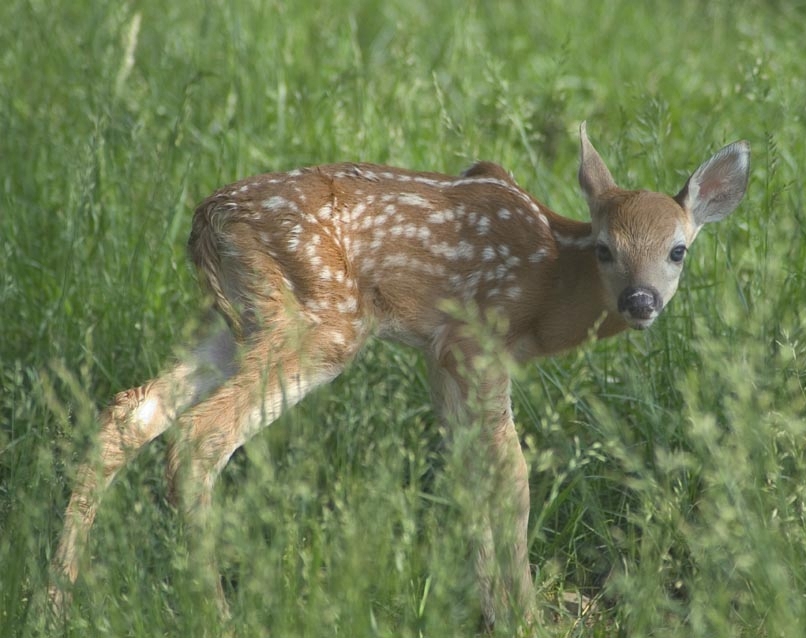Babies of all shapes and sizes. Fawns usually cause the most consternation among the public. They are cute, visible, and seemingly abandoned and helpless.
The peak of fawning season for adult does (>1 year old) is May 30 with 90% giving birth from May 12th to June 27th. For fawns (those bred when they were 6 months old and giving birth at 1 year old), the peak is June 19 with 90% giving birth from May 22nd to August 4th.
During the first few weeks of life, does only associate with their fawns briefly usually at sunrise and sunset with fawns nursing only 2 or 3 times a day. Fawns select their own bedding location away from its mother and move this hiding place frequently (all by itself). The doe is usually within about 90 meters of her resting fawn and makes contact only to nurse.
Because of this limited interaction with its mother the first few weeks of life, people often think fawns are abandoned. Our advice should always be “Don’t touch that baby!” While I’m sure there may be some evidence for rejection by the doe if a human handles her young, it is minimal. Given her investment, once the bond between mother and young is formed, it is unlikely to be broken even by a stinky human.
But bad things happened when people mess with wildlife – like imprinting. A doe will imprint upon her fawns in a few hours. If this critical period is interrupted, the imprinting process breaks down and may lead to abandonment. But, fawns take several days or longer to imprint on mom. During this interim, fawns risk being attracted to almost any large moving object – even people. That’s why does are secretive and aggressive during fawn rearing.
There is also the risk of predation. Fawns have little scent due to mom’s meticulous grooming. If we love all over them, our smell is all over them too making it easier for someone other than mom to find that baby.
As difficult as it is, people need to let fawns be. If, in fact, the fawn has been abandoned for some reason, nature will “take its course.” Based on research conducted in Pennsylvania, 57 percent of fawns born in north central Pennsylvania (forested areas) and 72 percent of fawns born in central Pennsylvania (agricultural areas) survive through the summer. This means that between 28-43% of fawns will not live to 6 months of age in Pennsylvania. The majority of this mortality occurs before they are 3 months old. Mortality factors include predators, starvation, failure to nurse, infections, and parasites. It is a harsh reality.
The best advice: Leave all fawns alone and give them their space. Mom will come back for it or she won’t but there isn’t anything you can do to change its fate.
-Jeannine Fleegle, Biologist
PGC Deer and Elk Section
If you would like to receive email alerts of new blog posts, subscribe here.
And Follow us on Twitter @WTDresearch
